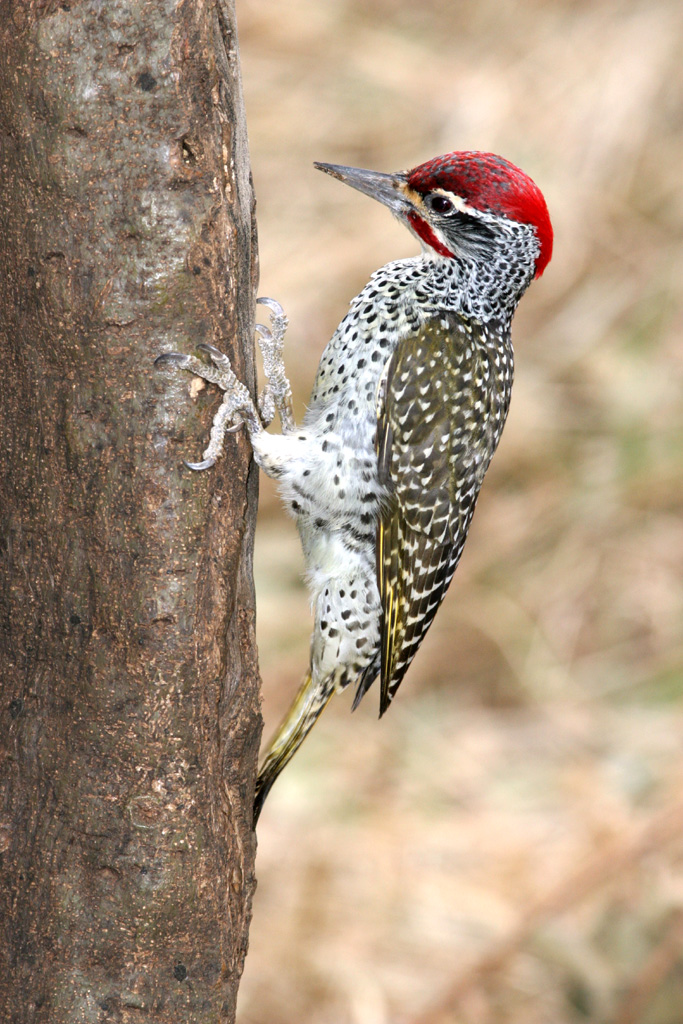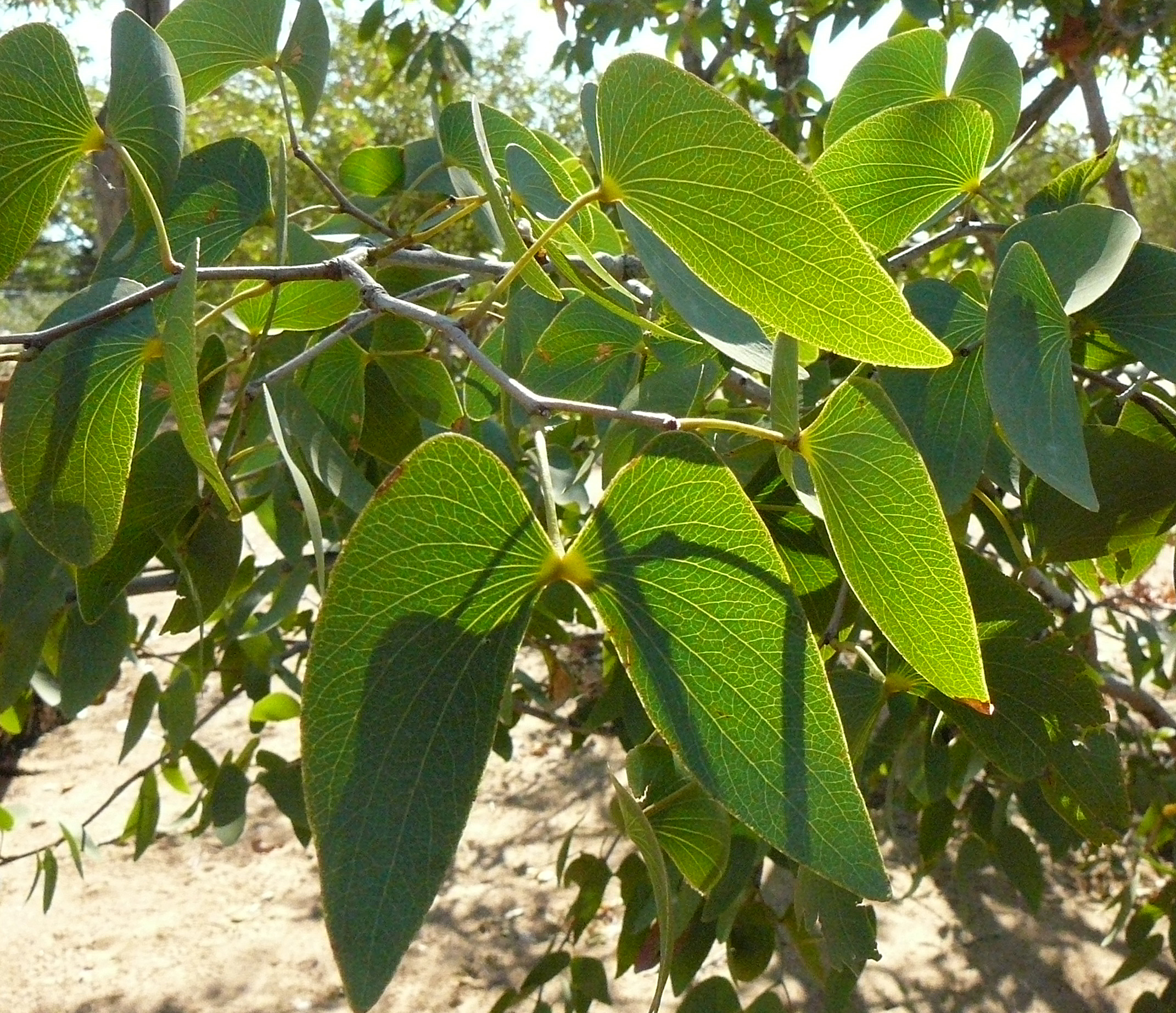|
Bennett's Woodpecker
Bennett's woodpecker (''Campethera bennettii'') is a species of bird in the family Picidae. It is found in woodlands and bushes in Africa. The International Union for Conservation of Nature (IUCN) has assessed it as a least-concern species. Taxonomy This species was described by Andrew Smith in 1836. Two subspecies are recognised: ''Campethera bennettii bennettii'' and ''C. b. capricorni''. The common name and Latin binomial commemorate the British naturalist Edward Turner Bennett. Bennett's woodpecker, the fine-spotted woodpecker, the Nubian woodpecker and the speckle-throated woodpecker form a superspecies. Description Bennett's woodpecker is about long and weighs . The male's forehead, crown and nape are red. The chin and throat are white. The upperparts are brown, yellow and white. The underparts are pale yellow, and there are dark spots on the breast and flanks. The eyes are red, the beak is grey, and the legs are bluish-green or grey-green. The female has a black forehea ... [...More Info...] [...Related Items...] OR: [Wikipedia] [Google] [Baidu] |
Andrew Smith (zoologist)
Sir Andrew Smith (3 December 1797 – 11 August 1872) was a British surgeon, explorer, ethnologist and zoologist. He is considered the father of zoology in South Africa having described many species across a wide range of groups in his major work, ''Illustrations of the Zoology of South Africa''. Smith was born in Hawick, Roxburghshire. He qualified in medicine at the University of Edinburgh obtaining an M.D. degree in 1819, having joined the Army Medical Services in 1816. South Africa 1820–1837 In 1820 he was ordered to the Cape Colony and was sent to Grahamstown to supervise the medical care of European soldiers and soldiers of the Cape Corps. He was appointed the Albany district surgeon in 1822 and started the first free dispensary for indigent patients in South Africa. He led a scientific expedition into the interior and was able to indulge in his interests of natural history and anthropology. On several occasions, he was sent by governors on confidential missions to vi ... [...More Info...] [...Related Items...] OR: [Wikipedia] [Google] [Baidu] |
Miombo
The Miombo woodland is a tropical and subtropical grasslands, savannas, and shrublands biome (in the World Wide Fund for Nature scheme) located primarily in Central Africa. It includes four woodland savanna ecoregions (listed below) characterized by the dominant presence of ''Brachystegia'' and '' Julbernardia'' species of trees, and has a range of climates ranging from humid to semi-arid, and tropical to subtropical or even temperate. The trees characteristically shed their leaves for a short period in the dry season to reduce water loss and produce a flush of new leaves just before the onset of the wet season with rich gold and red colours masking the underlying chlorophyll, reminiscent of autumn colours in the temperate zone. The woodland gets its name from ''miombo'' (plural, singular ''muombo''), the Bemba word for ''Brachystegia'' species. Other Bantu languages of the region, such as Swahili and Shona, have related if not identical words, such as Swahili ''miyombo'' (singula ... [...More Info...] [...Related Items...] OR: [Wikipedia] [Google] [Baidu] |
Birds Of Southern Africa
Birds are a group of warm-blooded vertebrates constituting the class Aves (), characterised by feathers, toothless beaked jaws, the laying of hard-shelled eggs, a high metabolic rate, a four-chambered heart, and a strong yet lightweight skeleton. Birds live worldwide and range in size from the bee hummingbird to the ostrich. There are about ten thousand living species, more than half of which are passerine, or "perching" birds. Birds have whose development varies according to species; the only known groups without wings are the extinct moa and elephant birds. Wings, which are modified forelimbs, gave birds the ability to fly, although further evolution has led to the loss of flight in some birds, including ratites, penguins, and diverse endemic island species. The digestive and respiratory systems of birds are also uniquely adapted for flight. Some bird species of aquatic environments, particularly seabirds and some waterbirds, have further evolved for swimmi ... [...More Info...] [...Related Items...] OR: [Wikipedia] [Google] [Baidu] |
Campethera
''Campethera'' is a genus of bird in the family Picidae, or woodpeckers, that are native to sub-Saharan Africa. Most species are native to woodland and savanna rather than deep forest, and multiple species exhibit either arboreal or terrestrial foraging strategies. Its nearest relative is the monotypic genus ''Geocolaptes'' of southern Africa, which employs terrestrial foraging and breeding strategies. They are however not close relatives of similar-looking woodpeckers in the " Dendropicos clade". Taxonomy The genus ''Campethera'' was introduced by the English zoologist George Robert Gray in 1841 with the little green woodpecker (''Campethera maculosa'') as the type species. The generic name combines the Ancient Greek Ancient Greek includes the forms of the Greek language used in ancient Greece and the ancient world from around 1500 BC to 300 BC. It is often roughly divided into the following periods: Mycenaean Greek (), Dark Ages (), the Archaic p ... ''kampē'' ... [...More Info...] [...Related Items...] OR: [Wikipedia] [Google] [Baidu] |
Least-concern Species
A least-concern species is a species that has been categorized by the International Union for Conservation of Nature (IUCN) as evaluated as not being a focus of species conservation because the specific species is still plentiful in the wild. They do not qualify as threatened, near threatened, or (before 2001) conservation dependent. Species cannot be assigned the "Least Concern" category unless they have had their population status evaluated. That is, adequate information is needed to make a direct, or indirect, assessment of its risk of extinction based on its distribution or population status. Evaluation Since 2001 the category has had the abbreviation "LC", following the IUCN 2001 Categories & Criteria (version 3.1). Before 2001 "least concern" was a subcategory of the "Lower Risk" category and assigned the code "LR/lc" or lc. Around 20% of least concern taxa (3261 of 15636) in the IUCN database still use the code "LR/lc", which indicates they have not been re-evalu ... [...More Info...] [...Related Items...] OR: [Wikipedia] [Google] [Baidu] |
Mopane
''Colophospermum mopane'', commonly called mopane, mopani, balsam tree, butterfly tree, or turpentine tree, is a tree in the legume family ( Fabaceae), that grows in hot, dry, low-lying areas, in elevation, in the far northern parts of southern Africa. The tree only occurs in Africa and is the only species in genus ''Colophospermum''. Its distinctive butterfly-shaped (bifoliate) leaf and thin seed pod make it easy to identify. In terms of human use it is, together with camel thorn and leadwood, one of the three regionally important firewood trees. Range and habit It is native to Southern Africa, including Southern Angola, Zambia, Southern Malawi, Namibia, Botswana, Zimbabwe, Mozambique and northern South Africa. It grows in alkaline (high lime content) soils which are shallow and not well drained. It also grows in alluvial soils (soil deposited by rivers). Where it occurs, it is often the dominant tree species, frequently forming homogeneous stands. In Northern South Africa a ... [...More Info...] [...Related Items...] OR: [Wikipedia] [Google] [Baidu] |
Acacia
''Acacia'', commonly known as the wattles or acacias, is a large genus of shrubs and trees in the subfamily Mimosoideae of the pea family Fabaceae. Initially, it comprised a group of plant species native to Africa and Australasia. The genus name is New Latin, borrowed from the Greek (), a term used by Dioscorides for a preparation extracted from the leaves and fruit pods of '' Vachellia nilotica'', the original type of the genus. In his ''Pinax'' (1623), Gaspard Bauhin mentioned the Greek from Dioscorides as the origin of the Latin name. In the early 2000s it had become evident that the genus as it stood was not monophyletic and that several divergent lineages needed to be placed in separate genera. It turned out that one lineage comprising over 900 species mainly native to Australia, New Guinea, and Indonesia was not closely related to the much smaller group of African lineage that contained ''A. nilotica''—the type species. This meant that the Australasian lineag ... [...More Info...] [...Related Items...] OR: [Wikipedia] [Google] [Baidu] |
Baikiaea
''Baikiaea'' is a genus of flowering plants in the legume family, Fabaceae. Species include: *'' Baikiaea fragrantissima'' *'' Baikiaea ghesquiereana'' *'' Baikiaea insignis'' *''Baikiaea plurijuga'' – Rhodesian-teak *'' Baikiaea robynsii'' Ghesq. ex Laing *'' Baikiaea suzannae'' Ghesq. *'' Baikiaea zenkeri'' ''Baikiaea'' is the characteristic tree of two dry woodland ecoregions of southern Africa, the Kalahari Acacia-Baikiaea woodlands and Zambezian Baikiaea woodlands.Burgess, N., Hales, J. D., Underwood, E. ''Terrestrial Ecoregions of Africa and Madagascar: A Conservation Assessment''. Island Press, Washington DC. 2004. The genus is named after William Balfour Baikie (1824-1864), Scottish explorer of the Niger River The Niger River ( ; ) is the main river of West Africa, extending about . Its drainage basin is in area. Its source is in the Guinea Highlands in south-eastern Guinea near the Sierra Leone border. It runs in a crescent shape through Mali .... ... [...More Info...] [...Related Items...] OR: [Wikipedia] [Google] [Baidu] |
Bird
Birds are a group of warm-blooded vertebrates constituting the class Aves (), characterised by feathers, toothless beaked jaws, the laying of hard-shelled eggs, a high metabolic rate, a four-chambered heart, and a strong yet lightweight skeleton. Birds live worldwide and range in size from the bee hummingbird to the ostrich. There are about ten thousand living species, more than half of which are passerine, or "perching" birds. Birds have whose development varies according to species; the only known groups without wings are the extinct moa and elephant birds. Wings, which are modified forelimbs, gave birds the ability to fly, although further evolution has led to the loss of flight in some birds, including ratites, penguins, and diverse endemic island species. The digestive and respiratory systems of birds are also uniquely adapted for flight. Some bird species of aquatic environments, particularly seabirds and some waterbirds, have further evolved for swimm ... [...More Info...] [...Related Items...] OR: [Wikipedia] [Google] [Baidu] |
Speckle-throated Woodpecker
The speckle-throated woodpecker (''Campethera scriptoricauda''), also known as Reichenow's woodpecker, is an East African woodpecker often considered a subspecies of Bennett's woodpecker. The bird is named after the German ornithologist Anton Reichenow. Description It is greenish above with yellowish barring (giving a slightly yellower appearance than the similar Nubian woodpecker) and pale yellowish below with black speckles. The speckles continue forward through the throat, the main point of distinction from both the Nubian and Bennett's woodpeckers. The bill is pale, depicted as yellow or off-white. Among its calls in Tanzania are "''wi-wi-wi-wi-wi'' and a short ''churr''." At least in Mozambique, it is probably vocally indistinguishable from Bennett's woodpecker. Distribution and habitat It lives in open woodland in Mozambique between Beira and the lower Zambezi river, in central and southeastern Malawi, and in eastern and central Tanzania north to Handeni as well as ... [...More Info...] [...Related Items...] OR: [Wikipedia] [Google] [Baidu] |
Nubian Woodpecker
The Nubian woodpecker (''Campethera nubica'') is a species of bird in the family Picidae. It is distributed widely in Central and Eastern Africa, from Chad in west to Somalia in east and Tanzania in south. It is a fairly common species with a wide range, the population seems stable, and the International Union for Conservation of Nature has rated its conservation status as being of "least concern". Taxonomy The Nubian woodpecker was described by the French polymath Georges-Louis Leclerc, Comte de Buffon in 1780 in his ''Histoire Naturelle des Oiseaux'' from a specimen collected in Nubia. The bird was also illustrated in a hand-coloured plate engraved by François-Nicolas Martinet in the ''Planches Enluminées D'Histoire Naturelle'' which was produced under the supervision of Edme-Louis Daubenton to accompany Buffon's text. Neither the plate caption nor Buffon's description included a scientific name but in 1783 the Dutch naturalist Pieter Boddaert coined the binomial name ''Picus ... [...More Info...] [...Related Items...] OR: [Wikipedia] [Google] [Baidu] |


.jpg)




